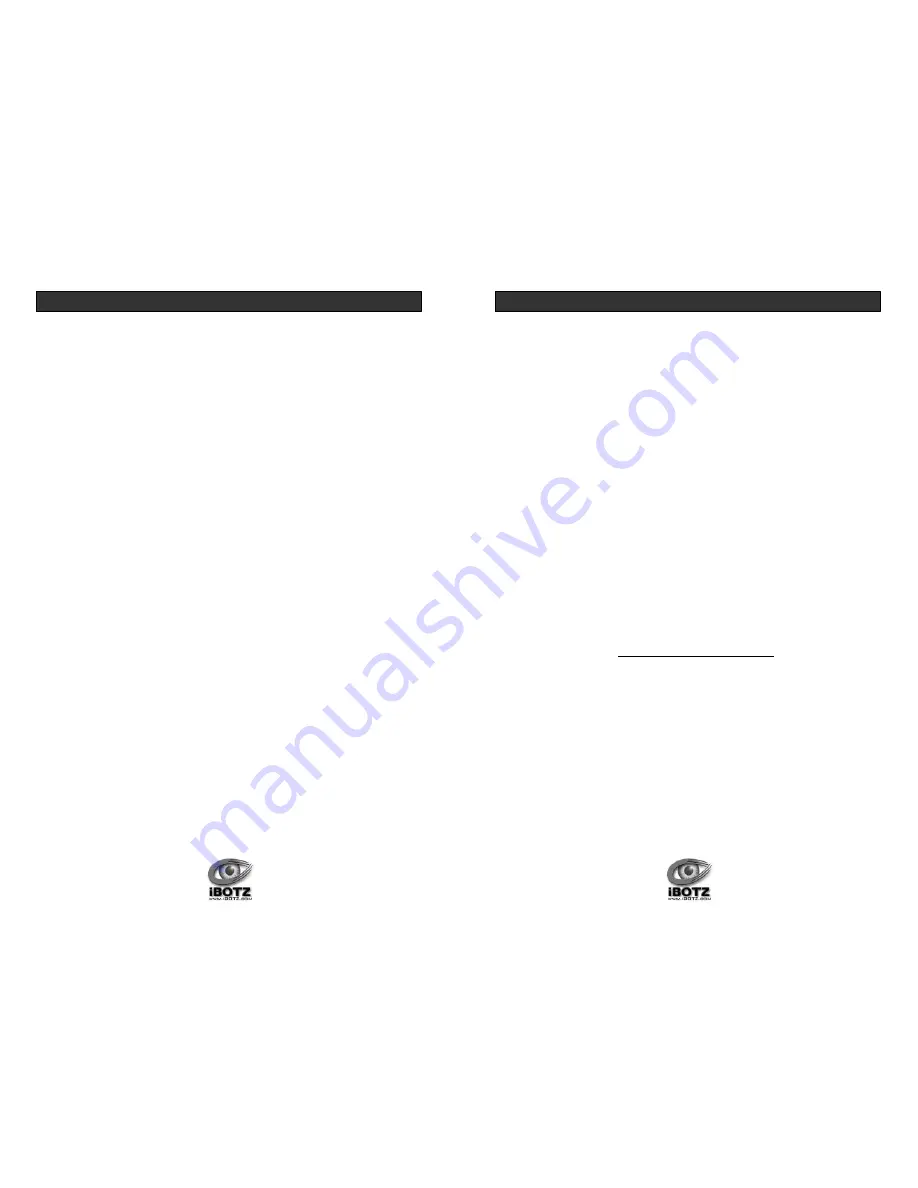
Learn all about the electronic parts used in robots
31
So what is electronics?
We all know that atoms are made up of protons, neutrons and electrons. The electrons are tiny
particles that orbit about the nucleus (made up of protons and neutrons) and have a special
electrical property of
charge
. The protons in the nucleus have a positive (+) charge whilst those
interesting electrons have a negative (-) one. This charge is what electronics is all about. When
electrons move together in a similar way we say there is a
current
flowing. The electrons are
actually moving all the time in materials like metals but they moving in all sorts of directions; it
is only when they all get together and move in the same direction we say that we have a current
flowing. However, electrons can't flow through every material. Materials that allow a current to
flow easily are called
conductors
. Materials that don't allow a current to flow are called
non-
conductors
or
insulators
. Metals are the most common conductors, whilst plastics are typical
insulators.
In order to get electrons to flow in a certain way they need to have an “energy” given to them.
Batteries are designed in such a way as to give that “energy” for electrons to flow between a
negative and a positive side (or electrode). This creates something like a pressure or force and
this is called the
voltage
. The bigger the voltage, the greater the pressure or force available to
the electrons. This force is sometimes called
potential difference
. A typical battery will give a
flow (or
voltage
) of 9 volts (
9v
). Before an electric current can go anywhere it needs to be given
a road or path to follow. This is what you see on our printed circuit board and it is called a
circuit
. Therefore by connecting a battery to a circuit we can get a current to move and perform
the function we want. The battery will eventually run out of energy as it pushes the electrons out
from one side and collects them at the other. This will eventually result in the battery running
down.
Current & Amps
So how do we measure current? Currents are measured in
amps
, and voltages are measured in
volts
(after the scientists Ampère and Volta). Voltages are sometimes called
potential
differences
, or
electromotive forces
. Current flows into a component and the same amount of
current always flows out of the component. As current flows through a component it will cause
a reaction of some kind, for example a bulb getting brighter.
Learn all about the electronic parts used in robots
32
Resistors & Resistance
Any material that hinders the movement of electrons is called a resistor. Electrons move more
easily through some materials than others when a voltage is applied. We measure how much
opposition there is to an electric current as
resistance
. Components that cause a resistance are
hence called
resistors
. The higher the resistance value, the more it restricts the flow. The
resistor will give the circuit a stable current thus giving protection to sensitive elements within a
circuit from damage
Resistance is measured in
ohms
after the discoverer of a law relating voltage to current. Ohms
are represented by the Greek letter omega. (Ù).
The main function of resistors in a circuit is to control the flow of current to other components.
Take an LED (light emitting diode) for example. If too much current flows through an LED it is
destroyed. So a resistor is used to limit the current.
What is Ohms Law?
The Law basically brings together the relationship between Voltage (
V
), Resistance (
R
) and
Current (
I
) as follows:
Potential Difference (V) in volts
Resistance(R) (ohm
Ω
Ω
)
=
Current (I) in amperes
Ohm discovered that if you double the voltage across the resistor then the current through it also
doubles. If you halve the voltage then the current is halved. This means that the current is
proportional
to the voltage. Not surprisingly the opposite to this also happens! He also found
that if you double the value of the resistor then the current through it is halved. If the value of
the resistor is halved the current is doubled. Thus the current is
inversely proportional
to the
resistance.








































